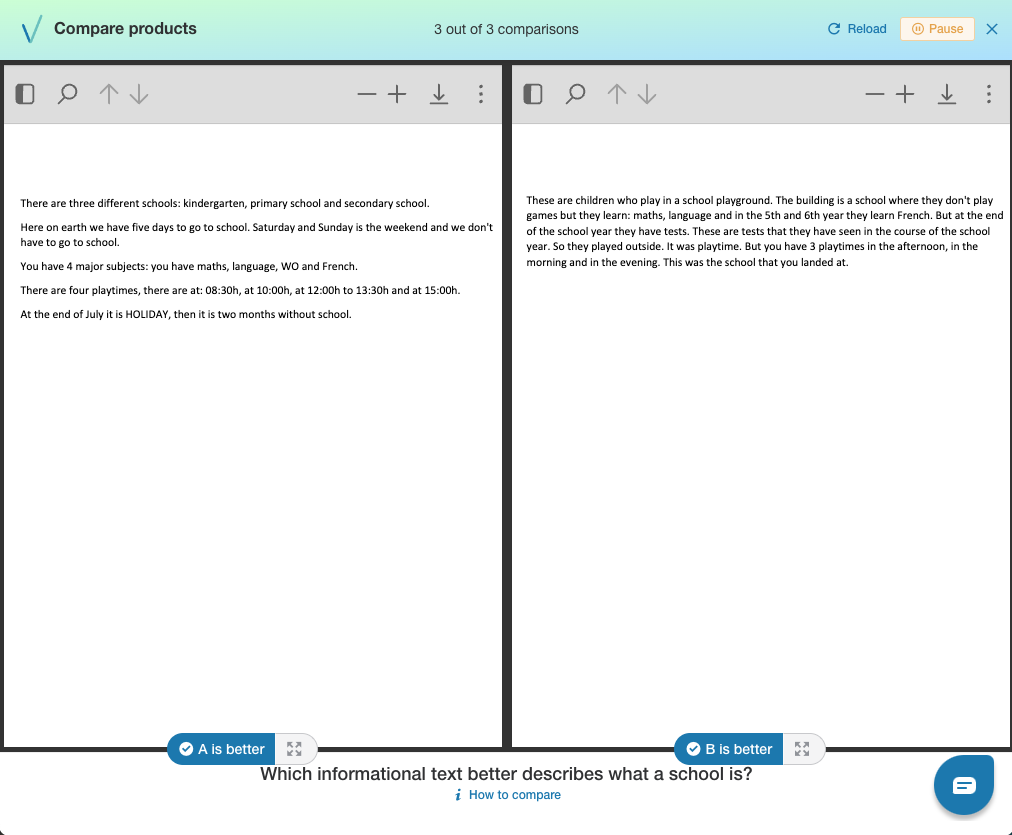
View the demo
1) comparing examples
By comparing products and actively looking for similarities and differences, students concretely experience quality differences. This leads to better results in their own work.

2) giving feedback
By giving feedback themselves, students analyze the product deeper. This is done using a constantly changing reference point so that quality criteria are formed bottom-up and a reflection on their own work is set in motion.

3) consulting results
By consulting not only their own work and associated feedback on the ranking, but also that of peers (anonymously), students have a wealth of information. Thus, they have a repertoire of strategies to draw from to close the gap between current performance and desired outcomes.

